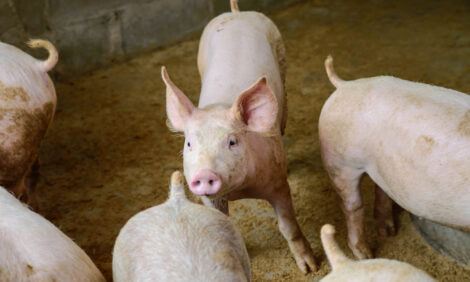



Market Preview: Storm Clouds Lurking Over Hog Market
US - Weekly U.S. Market Preview w/e 15th June, provided by Steve R. Meyer, Ph.D., Paragon Economics, Inc.At the risk of contributing to the overuse of the term "perfect storm," I have had the feeling all week that we are headed for a veritable perfect storm in the hog markets. Just like those ill-fated fishermen in the movie, we are forging ahead to make good things happen, while a host of storm clouds are lurking just over the horizon, the sum of which I believe could be the makings of a disaster. I hate to use that word, but it could be correct.
Consider the following:
- U.S. pork exports are sick. They are not on life support yet, and the disease may not even amount to more than a common cold, but for an entity that has been in such robust health for so many years, this is quite a shock. April shipments were 12% lower than one year ago and leave our year-to-date (YTD) total 1% lower. That's the first negative YTD number since February 2003. The only bright note -- and it is an important one -- is that the value of exports through April remained 8% larger than last year. Still, the slowdown in volume is definitely a concern. The main source of the malady, as can be seen in Figure 1, is Mexico where April shipments were nearly 40% smaller than one year ago and YTD shipments are down by 24%. Exports to Japan are still up 12% for the year, but even they fell 5% below year-ago levels in April. The only major markets that took more U.S. pork this year than last in April were Korea, China and Hong Kong.

- Chicken production is responding to higher prices. Figure 2 shows that broiler companies have responded quite logically to significantly higher prices by increasing egg sets every week since the week that ended Feb. 17. Those increases became significant the week that ended March 3, and have averaged 2.2% since that time. Perhaps more important is that egg sets have been over 3% larger than last year in six of the past eight weeks.
Reduced chicken production during the fourth quarter of 2006 drove chicken prices significantly higher over the winter months and, given the close substitute relationship of chicken and pork, helped keep pork wholesale and retail prices up. Like it or not, the Other White Meat is closely linked to chicken in consumers' minds and lower chicken prices will not be good for pork and hog values.
- Hog slaughter is heading upward. The increase will very likely be more than what was suggested by the March Hogs & Pigs report. Figure 3 shows actual weekly slaughter and forecasted slaughter based on that report. The red forecast line doesn't look much different from the green line representing 2006, but I believe some major changes are on the way.
My main goal at last week's World Pork Expo was to get an idea of the impact that circovirus vaccines may be having on supply. What I came away with was a clear consensus that the impact is large and growing. Producers, vendors and veterinarians all reported huge reductions in death loss and morbidity on farms that have used full doses of the various vaccines. Sow productivity is also higher on the farms that have vaccinated sows, leading one veterinarian to speculate that we may have actually been fighting this disease complex for several years without knowing it. In addition, one major supplier will have over 30% more vaccine available in July than is available in June.
The real question is: "How many more hogs will make it to market?" I think we have an indicator in March slaughter. Recall that I speculated back in April that the March bubble could have been caused by circovirus vaccine that became available in October. I, like many, thought that if that was so, the increase would be persistent, but it didn't stay and we have been searching for other answers ever since.
I overlooked pig flow dynamics, however. It now appears that the March bubble was likely caused by the first five weeks or so of vaccinated pigs reaching the market at the same time that older, slower-doing unvaccinated pigs were reaching market weight. The better-surviving, faster-growing vaccinates caused the bubble and slaughter surged by 4.5% for the six weeks from March 10 through April 21. Slaughter has averaged only 0.7% higher than in 2006 for the rest of the weeks this year. A circovirus vaccine impact of 3.8% sounds high for this fall, but it certainly leaves 2-3% as a very real possibility, especially where more and more doses are available.
- What about corn prices? Too much rain in wheat growing regions and questions about growing conditions in Russia and Ukraine caused another explosion in wheat futures this week. Add that to growing concerns about moisture conditions in the southeastern U.S. and the eastern Corn Belt and we now have December corn futures at $4.17 -- just a dime away from the contract life high. Welcome again to the world of subsidized and mandated biofuels. This will not be the last time this happens and the magnitude of these price changes could get even larger!

Take a long, hard look at pricing some pigs for this fall and winter. October is near $69 and December is near $67. Both charts show technical strength at the moment, so don't get in a rush. But there are a number of reasons to be concerned about hog prices going forward.
Finally, don't let the run-up in corn futures paralyze you. "Shock and awe" is another overused term, but it, too, applies to these remarkable times for hog producers.










